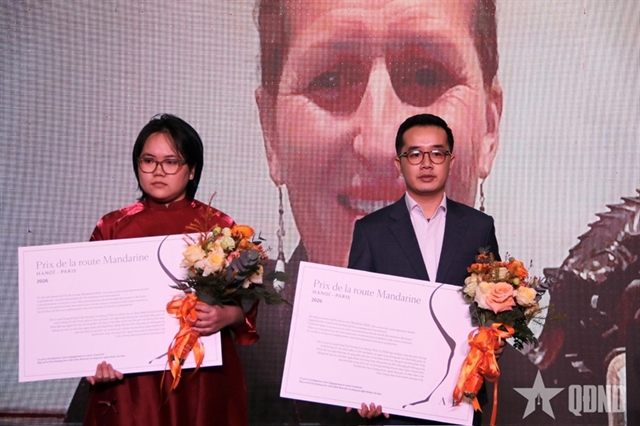 Features
Features

With more than 600 islands around the north and northeast of Bái Tử Long Bay, Vân Đồn District has played a strategic role in the country's history. Trần Mai Hưởng reports.
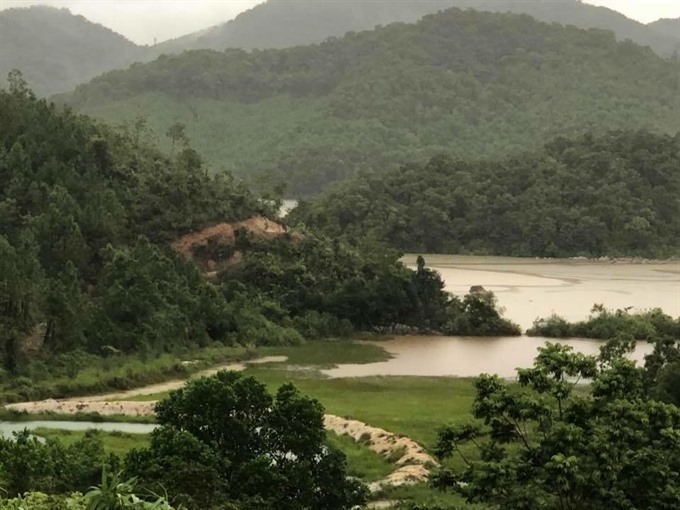 |
| Green landscape: An aerial view from Cửa Ông Temple. VNS Photo Trần Mai Hưởng |
By Trần Mai Hưởng
Vân Đồn Island is quiet on a rainy day. When we paid them a visit, the range of islands in Bái Tử Long Bay was covered in a blanket of drizzle.
We travelled from Cẩm Phả, passing small islands to Cái Bầu Island, which hosts Cái Rồng Town, the district’s centre.
Besides Cái Bầu, Vân Đồn Island district has other big islands like Quan Lạn and Minh Châu.
With more than 600 islands of different sizes around the north and northeast of Bái Tử Long Bay, 20 of which are habitable, Vân Đồn District plays an important strategic role. Over a total area of 550sq.km, the district has high economic and tourism potential, as well as distinctive cultural and historical features.
 |
| Busy port: Ships docked at Cái Rồng Port. VNS Photo Trần Mai Hưởng |
According to researchers, inhabitation of Vân Đồn stretches back thousands of years, evidence of which has been found at a number of archaeological sites.
Soi Nhụ Cave site hosts traces of New Stone Age (12,000 - 5,000 BC) settlers, even earlier than Hạ Long Culture (3,000 - 1,500 BC).
The name Vân Đồn stems from the Vân Mountain on Quan Lạn Island. In AD 980, the early Lê Dynasty (980-1009) set up an army outpost there.
In 1149 under the reign of Lý Anh Tông (1138-1175), the Vân Đồn island authority was officially formed as a strategic location, at the same time as a busy trading port of Đại Việt. The port was bustling under the dynasties of Lý (1009-1225), Trần (1225-1400), and later Lê (1442-1789) hosting trading ships from other countries.
Vân Đồn is also home to various historical sites representing important events in the national fight against foreign invaders. In 1288, on the Mang River on Quan Lạn Island, under the command of General Trần Khánh Dư, the Vietnamese troops defeated Yuan-Mongol invaders in the historic Bạch Đằng victory.
Vân Đồn also has great tourism potential, with Bái Tử Long Nature Reserve, magnificent caves, beautiful pristine beaches on the islands of Quan Lạn, Minh Châu, Ngọc Vừng and the natural landscapes on Hòn Đũa and Thiên Nga islands.
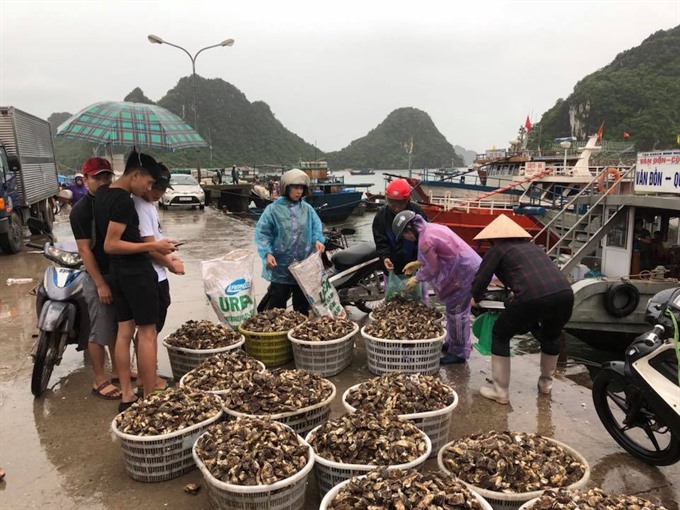 |
| Buy and sell: Bustling trade at Cái Rồng Port. VNS Photo Trần Mai Hưởng |
Despite the rain, we took a car trip round the main island of Cái Bầu. Roads on the island are fairly good, even though much of the infrastructure is still being built.
Hải Phòng-Hạ Long Highway has just opened while other construction has been accelerated.
Vân Đồn Airport recently welcomed its first passengers while the terminal is being completed to receive commercial guests early next year.
The Vân Đồn recreational centre is also under construction. The authorities of Quảng Ninh Province plan to call for investment in other projects, like Phượng Hoàng Island Ecological Tourism Area, sea tourism sites on Soi Nhụ and Chín islets and the Cái Bầu Island Ecological Tourism Site.
We visited Thiền Viện Trúc Lâm Giác Viên (Giác Viên Monastery), which offers stunning views over Bái Tử Long Bay. The monastery was built on the foundations of Phúc Linh Pagoda, which was built 700 years ago. The monastery was inaugurated ten years ago, its structure designed to blend with nature. We found hundreds of visitors at the site even though it was rainy.
We moved to Vạn Hoa Port before arriving at Cái Rồng Town, the administrative centre of Vân Đồn Island.
Cái Rồng Port, a hub in the trading port system of ancient Vân Đồn, is still busy.
When we left Cái Bầu Island to visit Cửa Ông Temple and pay tribute to Hưng Nhượng Đại Vương Trần Quốc Tảng (1252-1313), it was still raining in Vân Đồn.
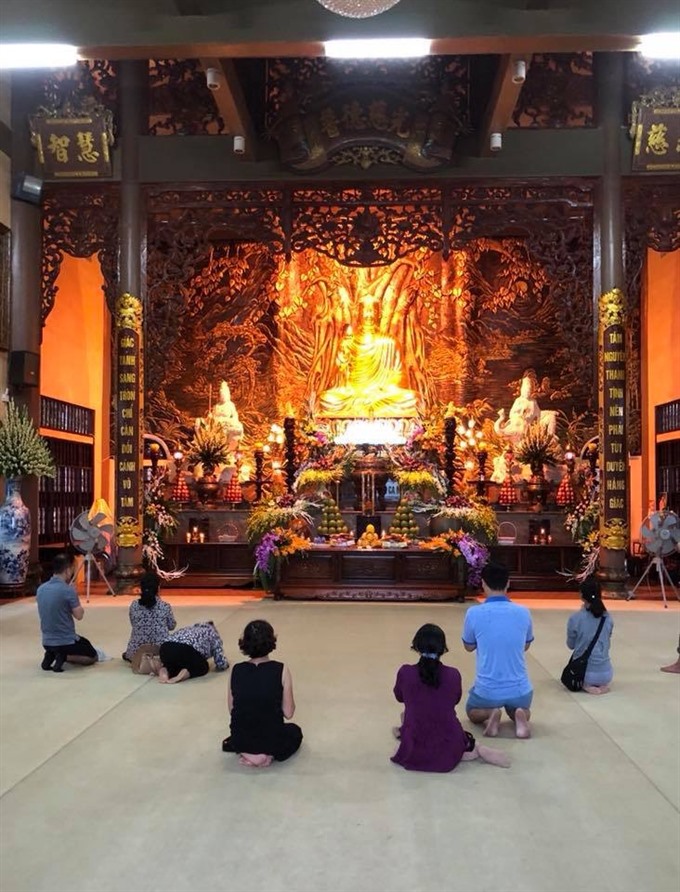 |
| Sacred place: People pray at the Cửa Ông Temple. VNS Photo Trần Mai Hưởng |
Cửa Ông Temple was built to honour Trần Quốc Tảng, the third son of renowned General Trần Hưng Đạo (1228-1300).
Tảng was a talented general under the Trần Dynasty (1225-1400), who made considerable contributions to fighting against Yuan-Mongol invaders in the 13th century. Following the royal decree, he guarded the restive northeast border of the country from 1288 till he died.
Locals respected him and built the temple to worship him after his death.
The temple consists of three areas: the Lower, Middle and Upper temples. The highest temple hosts the mausoleum of Trần Quốc Tảng.
As well as a place to worship Trần Quốc Tảng, Cửa Ông Temple is the only location dedicated to Gen Trần Hưng Đạo’s family and his close assistants. The figures have been immortalised in 30 valuable statues.
The temple was listed as a special national relic site and has become a popular tourism destination for domestic tourists. The temple festival is held from the 2nd until the end of the third lunar month with various cultural activities. VNS
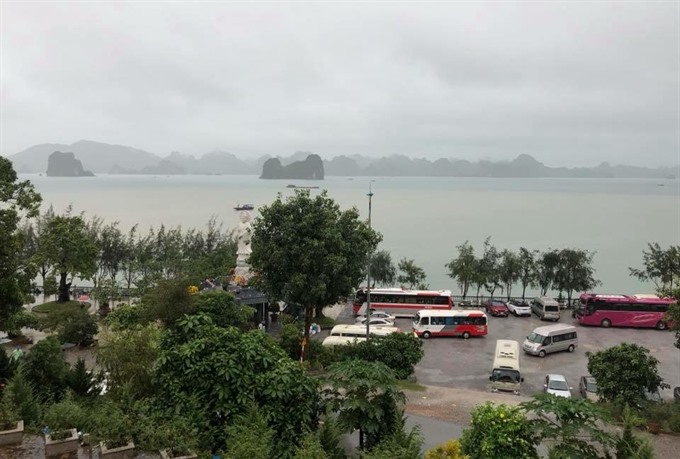 |
| Across the water: A view from Cửa Ông Temple to Bái Tử Long Bay. VNS Photo Trần Mai Hưởng |

